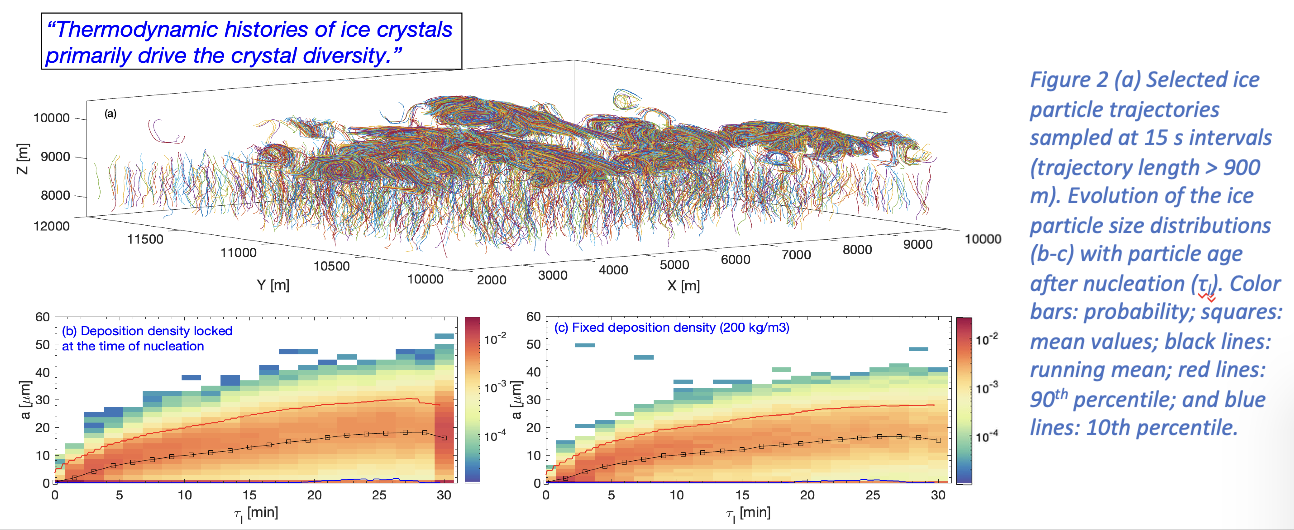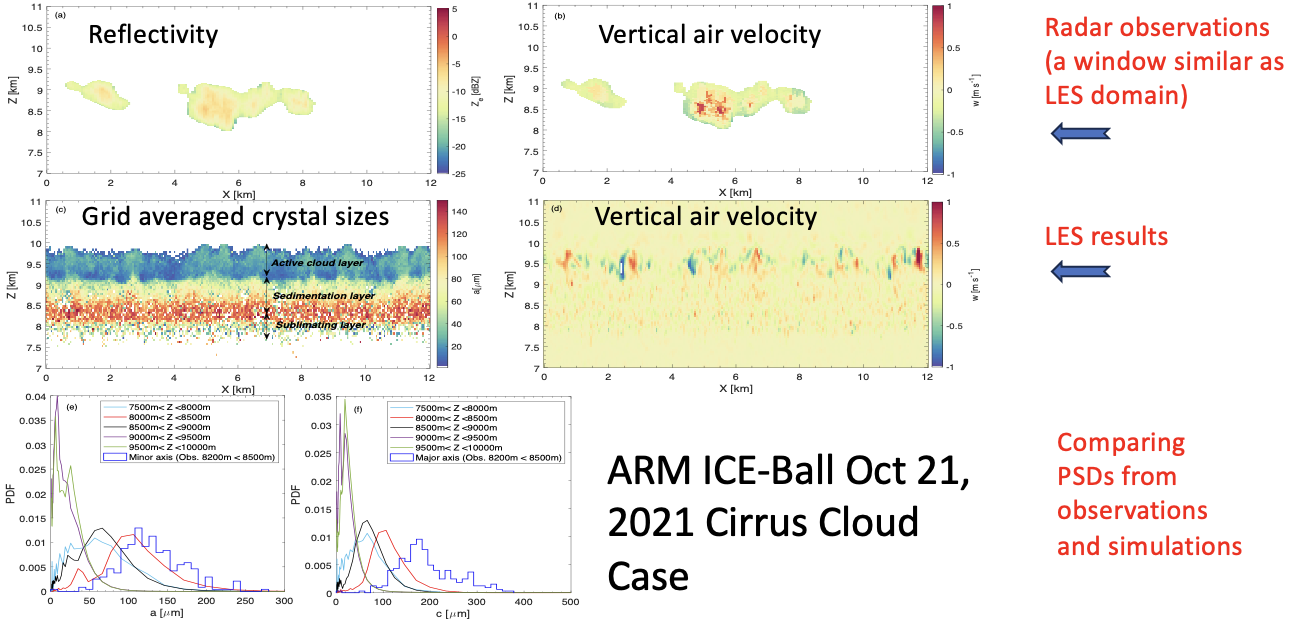Examining sources of ice particle diversity in cirrus clouds
Submitter
Morrison, Hugh Clifton
— University Corporation for Atmospheric Research
Area of Research
Cloud Processes
Journal Reference
Chandrakar K, H Morrison, J Harrington, G Pokrifka, and N Magee. 2024. "What Controls Crystal Diversity and Microphysical Variability in Cirrus Clouds?" Geophysical Research Letters, 51(11), e2024GL108493, 10.1029/2024GL108493 .
Science

(a) Selected ice particle trajectories from the particle model sampled at 15 s intervals (trajectory length > 900 m). Evolution of the simulated ice particle size distributions (b-c) as a function of particle age after nucleation (τl). Color bars: probability; squares: mean values; black lines: running mean; red lines: 90th percentile; blue lines: 10th percentile. Image from journal.

(a) Reflectivity from the Ka-Band Scanning ARM Cloud Radar and (b) the derived vertical air motion from October 21, 2021 during the ICE-Ball campaign. The time axis is converted to spatial scale using the mean horizontal wind at the cloud layer. (c) Vertical cross-sections showing mean crystal sizes with the three-layered cloud structure and (d) vertical velocity from the ICE-Ball cirrus cloud simulation. (e) a-axis and (f) c-axis particle size distributions at different altitudes (smooth solid lines) from the model and ICE-Ball observations (stairs). Image from journal.
Cirrus clouds are critical for climate, yet many associated microphysical and dynamical processes are uncertain. The goal of this study is to understand sources of variability of ice microphysical properties like crystal size and density associated with the wide variety of ice crystals observed in cirrus clouds.
Impact
For the first time, recent laboratory experiments of particle growth (related to crystal morphology) are combined with a state-of-the-art, particle-based model in a fluid flow model (large-eddy simulation) to examine sources of microphysical variability observed in cirrus. The model along with observations from the U.S. Department of Energy Atmospheric Radiation Measurement (ARM) user facility Ice Cryo-Encapsulation by Balloon (ICE-Ball) field campaign at ARM's Southern Great Plains (SGP) observatory were analyzed to understand sources of crystal diversity in cirrus clouds.
Summary
Variability in microphysical properties of cirrus clouds is important for climate due to its impact on radiative forcing, yet challenging to represent in models. This study shows that microphysical variability is dominated by variability in the thermodynamic histories of ice crystals. However, diversity in crystal morphology notably increases spatial variability of mean particle size and density, especially at mid-levels in the cloud. Little correlation between instantaneous crystal properties and supersaturation (consistent with in situ observations) occurs even though the modeled particle morphology is directly tied to supersaturation based on laboratory measurements. This suggests that particle time history is required to capture a diverse spectrum of crystals.
Keep up with the Atmospheric Observer
Updates on ARM news, events, and opportunities delivered to your inbox
ARM User Profile
ARM welcomes users from all institutions and nations. A free ARM user account is needed to access ARM data.


















